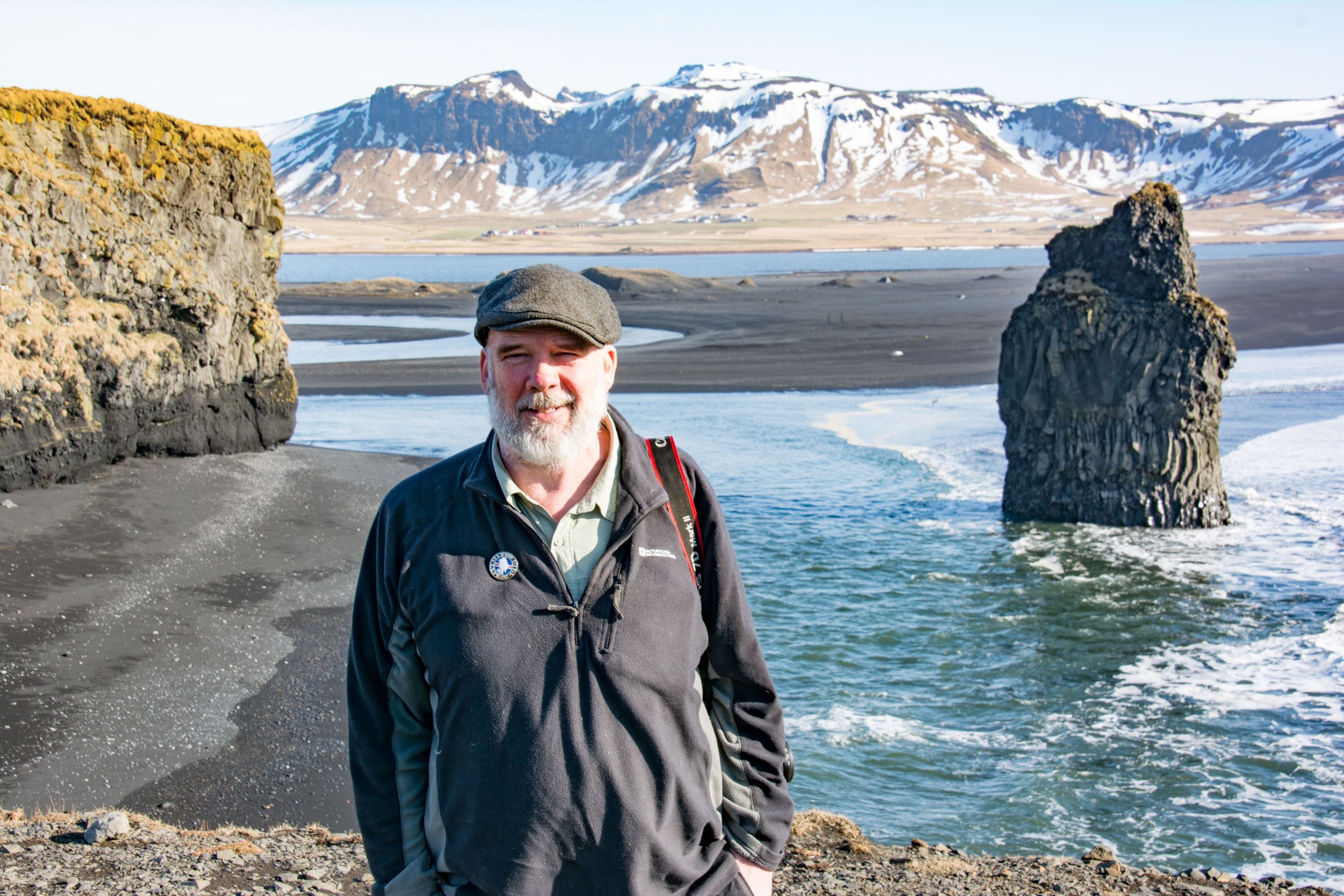The Complete Guide to Iceland’s Golden Circle and South Coast
Iceland’s Golden Circle and the South Coast have long been the poster child for tourism in Iceland. In this easy area to explore in a few days from Reykjavik, you can take in amazing waterfalls, glinting glaciers, lush green mountains and dramatic valleys draped in basalt and moss.
If you’ve seen Iceland only in pictures, it’s likely that these are the landscapes you’ve been shown.
Over the years, I’ve witnessed as these areas have become more popular with travelers in Iceland. And they are busy for most of the year. But for me, this is still the most tempting area for travel when you’re not going to attempt the ring road. The bang you get for your buck is just too good – both regions are teeming with Iceland’s iconic natural wonders.
Black sand beaches extend along the coast, geothermal areas steam and sputter, and waterfalls cascade down rugged cliffs and the Highland shelf, while brooding volcanoes sit beneath the shimmering ice caps.
This is the beating heart of Iceland, a region that promises jaw-dropping landscapes and immersive natural wonders. While these are the busiest spots in the country outside of Reykjavik, they’re popular for good reason.
Table of Contents
See more of our Iceland articles:


What are the Golden Circle and South Coast?
The Golden Circle
The Golden Circle is Iceland’s most popular tourist route, covering approximately 190 miles (300 kilometers) in a loop from Reykjavik into the surrounding countryside northwest of the capital. The ready-made day trip packs a heavy punch when it comes to natural sights, and it’s always the first place I’ll take visiting friends and family for a fun day out of the city.
The route features three major stops: Thingvellir National Park, Geysir which erupts in a plume of steam and spray every 5 minutes, and the thundering waterfall Gullfoss. Thingvellir is one of Iceland’s most historically significant sights, where the early Vikings first met and formed their parliament between the North American and Eurasian tectonic plates.
There’s the erupting geysir called Strokkur, exploding in steam and spray in a bubbling geothermal area, and then Gullfoss, one of Iceland’s largest waterfalls, a thundering cascade tumbling down a canyon at the very edge of the Highlands.
In addition to these major stops, the area is filled with small and charming villages, scenic spots, and peppered with vacation homes for rent if you fancy a stay out in the countryside.
The South Coast
From the Golden Circle, Iceland’s South Coast is accessed via the Ring Road, the region stretching from here all the way to Höfn in the southeast corner. I would always recommend combining the Golden Circle with a journey along the south coast because the roads lead you down there perfectly after completing the Golden Circle.
The South Coast also represents a big departure from the sporadic natural wonders of the Golden Circle as well. Along the Golden Circle drive you’ll mostly be passing through genteel countryside with a few big sights here and there, whereas the landscapes of the South Coast become a lot more dramatic, shaped by the glaciers dotted along the edge of the highlands, beneath which lie some of the country’s most destructive volcanoes.
These landscapes continue all the way until you reach the biggest glacier in Europe: Vatnajökull. Here things change too; huge eruptions and glacial floods have created a barren expanse of black sand and glacial outwash, and for many it’s the first encounter with Iceland’s completely otherworldly landscapes.
Why visit
Visiting the Golden Circle is like flipping through a condensed version of Iceland’s greatest hits, and a straightforward way to get acquainted with what Iceland’s about. From the historical significance of Thingvellir to the explosive delight of the erupting geysir and thundering Gullfoss waterfall, and some steamy hot springs, it’s got it all.
Plus, if you’re not in the country for a long time and spending it based in Reykjavik, the Golden Circle makes the most sense for an excursion to see some of the countryside outside the city.
The South Coast, on the other hand, is Iceland’s most tempting destinations, and often feels as if it’s the real Iceland that you need to experience if you’re planning to come. Of course, that’s not true, but this is a special place – even with the crowds.
Home to Iceland’s postcard-worthy waterfalls, mysterious black sand beaches, and the glinting glaciers whose retreating tongues have left behind expansive lagoons filled with ice bergs, it’s really where Iceland’s nickname ‘The Land of Fire and Ice’ comes into play.
It’s also diverse, ranging from lava fields to verdant paddocks to jagged mountains to vast expanses of black sand. And if you’re looking at doing any kind of activity on the glaciers, heading towards the southeast corner and Vatnajökull is your best bet.
Overall, these two areas of Iceland deliver big on the landscapes and nature, and all within an easy drive of Reykjavik. This is the Iceland of your imagination, and of the international press. But don’t let that stop you from experiencing these regions for yourself.
Where are these 2 areas?
The Golden Circle
The Golden Circle is an easy day trip from Reykjavik, the chunk of countryside between the capital area and the beginning of the Highlands to the northeast. Thingvellir is the exact location where the two tectonic plates are slowly inching apart, and around this area are some dormant volcanoes, mountains, and eerie lava fields.
Getting here: getting to the Golden Circle from Reykjavik is easy. Head north from the city, and then veer off to the right onto Route 36, which whisks you toward Thingvellir in just half an hour or so. You could also take the Ring Road heading towards the south coast, and then turn up near the town Selfoss to access the Golden Circle area from the southern side, but it’s a longer drive and doesn’t make much sense.
The South Coast
The South Coast is the long strip of lowlands between the elevated Highland shelf and the ocean. Inland, the mountains shoot up to the glaciers above, hiding away volcanoes that over the years have erupted and given the south its distinctive geography and natural scenery. There are huge black sand beaches along the coast, twisted cliffs and huge lava fields, while a bit further inland you’ll find canyons carved out by glacial floods.
Getting here: getting to the south is as easy as taking the Ring Road from Reykjavik towards Hveragerði and Selfoss. If you’re approaching from the Golden Circle, there are several roads leading south from the area, emerging on the Ring Road in several different points near those two towns.
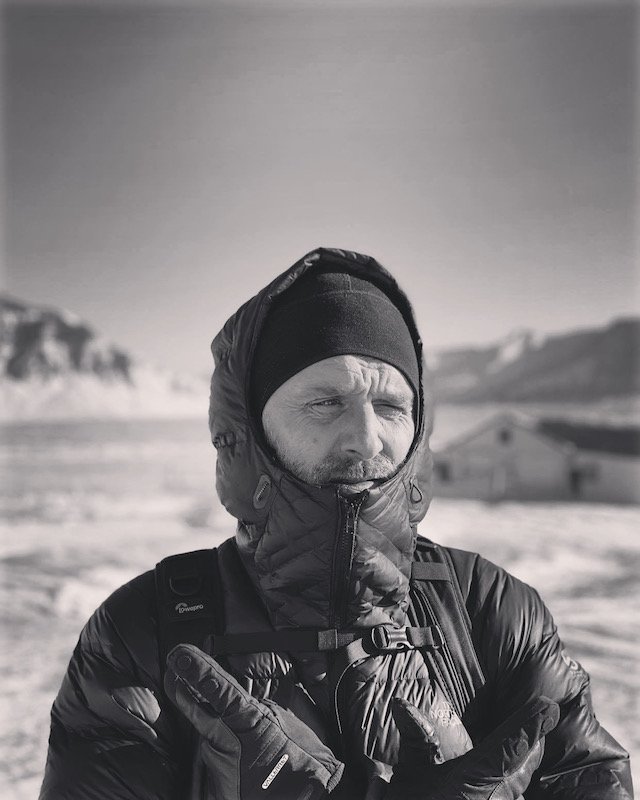
Connect with a local expert in Iceland for help perfecting your itinerary, answers to all your travel questions, and fabulous local tips for a better visit!
Best time to visit
Spring (March to May)
The best time to visit the Golden Circle and South Coast is in Spring. While it’s extremely hard to beat the crowds in both regions at any time of year, I think a visit during April or May helps with this a lot. You’ve got shoulder season prices, and the daylight hours are already getting surprisingly long – 17 hours in May – which lets you get an early start or stay out later to avoid the crowds.
Temperatures are still chilly, ranging from 30°F to 50°F (-1°C to 10°C), but there’s no bad weather in Iceland, only bad clothing.
Summer (June to August)
From June to August, the Golden Circle and South Coast are at their busiest. While the daylight hours are long, the crowds at most sights almost make it feel as if you’re on a bit of a tourist conveyor belt, ticking off one sight after the other alongside thousands of others.
Still, summer brings with it plenty of special experiences; mostly in the evening when the sun doesn’t set, and you can spend some quiet time in nature listening to the birds. Temperatures range between 50°F to 60°F (10°C to 15°C).
Autumn (September to November)
Autumn brings stunning fall colors, fewer tourists, and the beginning of the Northern Lights season. Temperatures cool down, ranging from 32°F to 50°F (0°C to 10°C), and prices once again are cheaper. However, this is the season you need to be prepared for variable weather, including rain and wind that can sweep in unexpectedly.
Thingvellir is a beautiful place to watch the colors change, as is Skaftafell, and I often find the moody grey skies to contrast beautifully with the fading greens of South Iceland.
Winter (December to February)
For an off-season adventure, both the Golden Circle and South Coast are accessible during the winter. With regular service that clears the snow, Winter transforms the landscape into a snowy wonderland, with frozen waterfalls and fewer crowds.
Temperatures range from 28°F to 38°F (-2°C to 3°C), and daylight hours are limited. This is also the best time to see the Northern Lights, provided the skies are clear.
How long to stay
For the Golden Circle, a day trip from Reykjavik is sufficient to see the main sights. However, these day trips often coincide with thousands of others day trips, so if you’re like me and like to avoid the largest crowds whenever possible, an overnight stay in the area is a wonderful way to do it. There are hundreds of vacation homes to choose from, and plenty of hotels as well.
For the south coast, you’ll want to carve out at least three days to do it, especially if you’ll be returning back to Reykjavik after you’ve reached the Glacier Lagoon or Höfn. If you’re continuing around the ring road, you could do it in two days, with the first half targeting the sights between the Golden Circle and Vik, and the second day dedicated to Skaftafell, the Glacier Lagoon, and the glacier Vatnajökull.
Here’s a sample 3-day itinerary that combines both the Golden Circle and South Coast. I’ve followed this exact plan several times during my own ring road trips.
Day 1: The Golden Circle
Start out from Reykjavik early in the morning and you should beat the tourist buses as they begin to arrive at Thingvellir National Park. Here, take in the views from the viewing platform near the main Visitor’s Center, and then take a walk through the Almannagjá Gorge, which is the rift between tectonic plates. It leads past several points of interest and culminates at the waterfall Öxarárfoss.
After Thingvellir, drive the 45 minutes to Geysir, where you can easily spend about 45 to 60 minutes wandering around the geothermal area and watching Strokkur erupt. This is a popular service stop with a small food court for lunch.
Then, the waterfall Gullfoss is just a 10-minute drive away. After the three highlights, I’ll usually head south to Flúðir for a soak at either Hrunalaug Hot Spring or the Secret Lagoon.
Either stay in the area or drive closer to the south coast for the night.
Day 2: The South Coast
Another early start will see you stop by the waterfalls Seljalandsfoss and Skogafoss before most crowds arrive. Then, I will usually take a detour north of the ring road to the glacier tongue at Sólheimajökull, with good views just a short walk from the parking area.
Afterwards, Dyrhólaey is the southernmost point in Iceland and has epic views over the black sand beaches and glaciers inland. Just to the east is Reynisfjara Black Sand Beach, worth a quick stop to admire the basalt caves and the powerful tides.
Just over the hill is Vik, a good spot to have a break from sightseeing and relax a bit with some food or coffee.
I will usually make the drive out to Skaftafell for the night, staying in the shadow of the glacier.
Day 3: Vatnajökull National Park
If a glacier hike is something you’re interested in, an early-morning tour on Day 3 is your best bet. Afterwards, Skaftafell offers more opportunities for hikes, home to the pretty Svartifoss Waterfall and a wealth of interesting landscapes revealed by the retreating glacier.
Múlagljúfur Canyon is further east and about a 3-hour return hike into some primordial landscapes that are among the most untouched in the country.
Then, the Glacier Lagoon and Diamond Beach are next. Afterwards, you can either choose to stay somewhere in the area if you’re turning back or continue to the area around Höfn for the night, the largest town in the area and the beginning of the east coast.
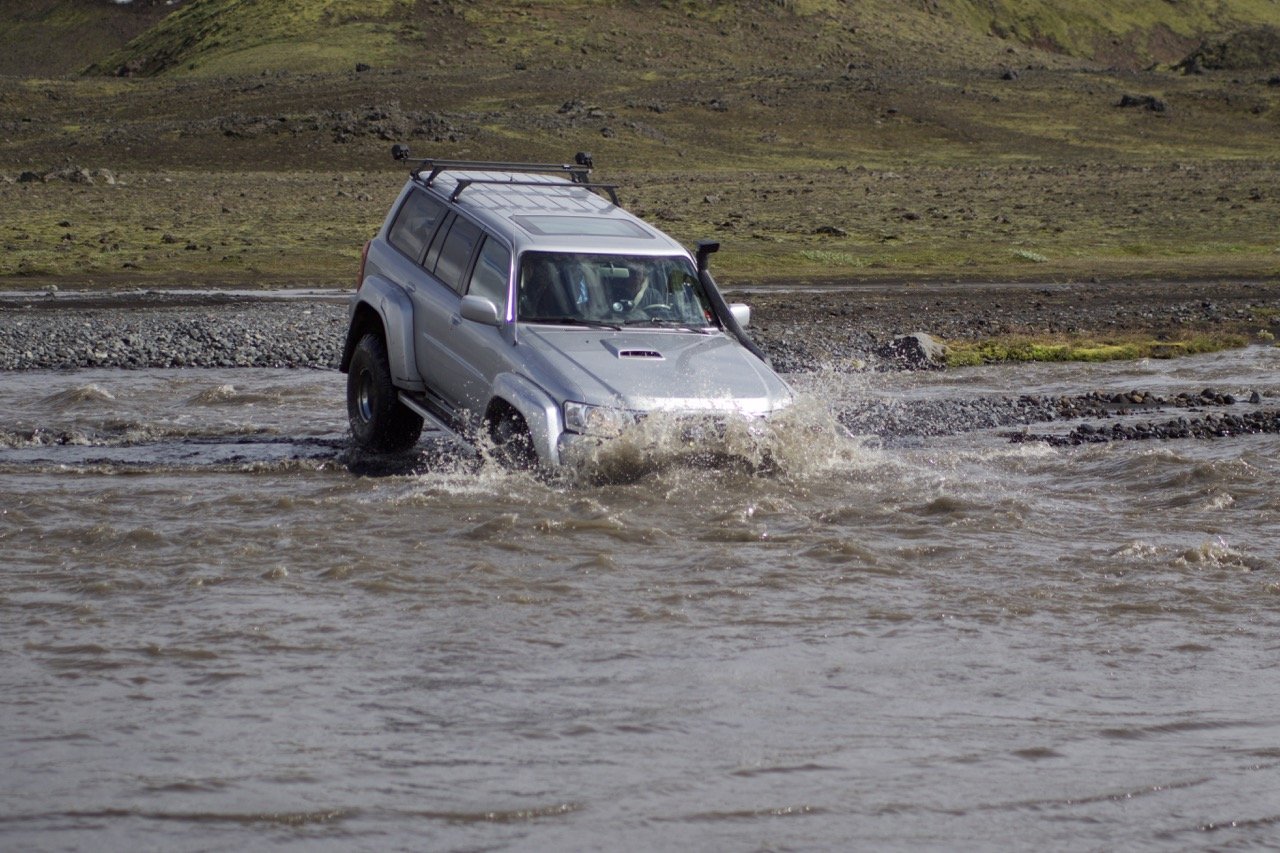
Where to stay - best bases
Reykjavik
Vik
For the Golden Circle, it’s such an easy day trip to do from Reykjavik that it makes the most sense to just base yourself in Reykjavik for the night.
If you fancy staying out in the countryside, I would choose to stay somewhere in the vicinity of Geysir and Gullfoss, which lets you complete any late-night excursions to either.
For the South Coast, Vík is a popular base due to its central location, and you can stay here for a couple of nights and visit the sights in either direction. For those focusing more on the Vatnajökull glacier and its fringes, the Skaftafell area has some accommodation options that provide easy access to the national park.
Towns to visit in this area
Laugarvatn
Beginning in the Golden Circle, Laugarvatn is a lovely little village between Thingvellir National Park and Geysir. Many drive right through, but the lake is beautiful and worth a stop, as is the Laugarvatn Fontana Spa, an overlooked hot spring that allows you to cold plunge in the lake.
This is also where you can join a tour and watch them unearth some bread that has been baked in the ground due to the geothermal energy here – pretty neat.
Flúðir
Iceland is full of villages that come with a pleasant surprise, and in Flúðir, that surprise is an amazing Ethiopian restaurant. I’ve also found it a bit of a funny place to have such a restaurant but appreciate it so much whenever I get the chance to go and eat there, usually when staying overnight in a nearby summer house.
Flúðir is also home to the popular Secret Lagoon, one of the oldest swimming spots in Iceland, and nearby Hrunalaug Hot Spring, which are just some pools in the middle of a farmer’s field. Very rustic and natural.
Hveragerði
Over time I’ve come to love Hveragerði and think it would make an excellent place to base myself if ever I were to live outside of Reykjavik. It’s the first town you’ll see after leaving Reykjavik on the Ring Road heading south and located smack bang in the middle of a geothermal hot spot. There’s steam billowing out of the mountains around town, and it powers several cool-looking greenhouses that grow local fruits and vegetables.
Lately it has had more restaurants and bars opening, and a new food hall inside the Greenhouse Hotel makes for a tasty dinner option before or after hiking to the Reykjadalur Hot Spring River in the mountains north of town.
Selfoss
The next town along from Hveragerði is Selfoss, a charming place with a picturesque location on the banks of the powerful Ölfusá river. Here is one of the busier towns outside of Reykjavik, although it still feels very rural.
Still, there are plenty of restaurants and hotels to choose from, and for fans of chess, you’ll want to check out the Bobby Fischer Center, dedicated to the American chess grandmaster who beat the defending champion Borris Spassky from the Soviet Union in the 1972 World Championship held in Reykjavik.
Vík í Mýrdal
Vík is the southernmost village in Iceland, known for its stunning black sand beach and proximity to many of the South Coast’s top attractions. It’s a suitable place to rest and refuel, with several hotels, guesthouses, and eateries.
Out of all the towns in the Golden Circle and South Coast, to me this one feels the most unique. Green hills running down from the mountains above envelop the entire town, while the huge cliffs at the western edge make a beautiful sight. Make sure to drive to the church on the hill above town, where the views are incredible.
Kirkjubæjarklaustur
About 45 minutes along the Ring Road from Vik is this tongue-twister of a town, Kirkjubæjarklaustur. Honestly, if you didn’t glance at a map, you might just drive right past here; the town is set back a bit from the Ring Road and hidden behind some hills.
It’s a good place to stay overnight with plenty of hotels in the area, and some nice hiking trails as well that few people do. Other than that, a pair of waterfalls make for some nice sightseeing.
Höfn
Located in the southeast corner of Iceland, I usually think of Höfn as part of the south coast even though it is technically in East Iceland. That’s because for many heading along the south and back, it’s one of the best spots to turn around and head back to the capital.
Höfn serves as the service town for all the glacier guides who run tours on Vatnajökull and the Jökulsárlón Glacier Lagoon. It’s also the lobster capital of Iceland and an important fishing port, with a handful of fantastic restaurants clustered around the harbor.
From the town, the views are superb, looking out across the water and toward the icy tongues of Vatnajökull creeping down from the mountains.
What to see and do along the Golden Circle
1. Thingvellir National Park
Thingvellir National Park is a UNESCO World Heritage site where the tectonic plates of North America and Eurasia meet and are slowly tearing apart. The rift is a fascinating geological feature of Iceland, a one reason why the island is so volcanically active.
Thingvellir also holds huge historical significance for Iceland, as this was the place where the first settlers gathered and formed their Parliament in the year 930. This is where the country became what it is today, where the first Icelanders traded, made laws, settled disputes, and celebrated their biggest events.
One of the most unique experiences you can have in Iceland also takes place inside Thingvellir’s borders: snorkeling or diving in the Silfra fissure. This fissure is filled with clear water that is filtered underground through lava rocks for hundreds of miles.
2. Geysir Geothermal Area
Haukadalur Valley, also simply called ‘Geysir’, is home to Iceland’s famous erupting geysir called Strokkur (the actual Geysir hasn’t erupted in some time). Still, it’s an impressive sight, and made better by the surrounding geothermal power, where silent pools brood and boil, and steam rises from bubbling mud pits and fissures in the ground.
3. Gullfoss Waterfall
I’ll never tire of arriving at Gullfoss and watching this thundering two-tiered waterfall crash down into the canyon below. It’s a remarkable sight no matter the weather, however a sunny day when a rainbow arcs over the waterfall mist is hard to beat.
There are plenty of viewing platforms – you’re your time at each to admire the sheer power of this beautiful waterfall. Also make sure to take time and read the story of how one local Icelander saved it from being turned into a hydropower dam, with a sign explaining the tale at the bottom viewing platform.
4. Pick up fresh ice cream at Efstidalur Farm
One of my favorite stops in the Golden Circle area is at the farm called Efstidalur, where you can buy fresh ice cream. The café has a glass window looking in on the cow’s barn, so you can lock eyes with the cows while enjoying your ice cream and coffee.
It’s also a nice way to break up the drive between Thingvellir and Geysir, and watch as the farmers go about their business.
5. Bruarfoss Waterfall
Most Golden Circle day tours don’t include this waterfall on their itinerary, but with a new parking area making access far easier than it used to be, this might change soon. As far as waterfalls go, it’s not the biggest nor the prettiest, but the combination of churning whitewater and vivid blues contrasting with black rocks in the river make for a beautiful sight.
6. Enjoy lunch Inside a tomato greenhouse at Friðheimar
Iceland’s most famous greenhouse is Friðheimar, whose owners have won tourism with the experience they offer here. If you book far enough in advance, you can enjoy a lunch inside the greenhouse where they grow their tomatoes, with a tomato-themed menu.
There’s everything from tomato bread to fresh pasta with homemade tomato sauce, and even tomato beer. Tours of the greenhouse also let you understand more how the geothermal energy and agriculture work in Iceland.
Photo: Pierre-Selim Huard, CC BY 4.0, via Wikimedia Commons
7. The Secret Lagoon or Hrunalaug hot springs
I’ve already mentioned these two hot springs in the itinerary above, and it definitely makes sense to do these at the end of a tour of the Golden Circle thanks to their location near Flúðir. If you need help deciding between the two – the Secret Lagoon is more of a luxurious experience, with a bar and a huge pool of hot water to soak in, although don’t expect Blue Lagoon or Sky Lagoon levels of luxury here.
Hrunalaug on the other hand are just some pools in a field but made better thanks to the farmer now charging admission to take care of the place and build additional infrastructure. He also controls how many people can go at a time so it’s never too crowded.
8. Laugarvatn Fontana
This is an excellent hot spring as well, but I’ll admit I think due to its location in the middle of the Golden Circle a lot of people miss it as they rush to see all the sights before they even start thinking about a hot spring.
Still, if you’re staying overnight in the Golden Circle, it’s a great option for a soak, and I highly recommend taking a cold plunge in the lake to get the blood pumping.

Connect with an Iceland local expert for help perfecting your itinerary, answers to all your travel questions, and fabulous local tips for a better visit!
Main sights in the South Coast
1. Seljalandsfoss Waterfall
As you head south from Reykjavik, your first major stop should be Seljalandsfoss. This waterfall is unique because you can walk behind it, offering a perspective like no other. The path behind the falls can be slippery, so wear sturdy shoes and prepare to get a little wet – it’s worth it for the view!
Also, head north along the cliff face and you’ll also discover Gljúfrabúi Waterfall, hidden within a gorge that cuts into the cliff.
2. Skógafoss Waterfall
Further along Route 1, you’ll find Skógafoss, one of Iceland’s largest and most beautiful waterfalls. At The near-perfect curtain of white-water cascading over the cliff is a gorgeous sight, and you can walk right up to the base of the falls where the water crashes into the river.
Stairs lead up to the top of the cliff for amazing views over the area, and you can also continue walking upriver, leaving the crowds behind and discovering what feels like another large waterfall every 10 meters or so.
This path is the beginning of the Fimmvörðurháls Pass, the hiking trail that leads between the glaciers Eyjafjallajökull and Mýrdalsjökull and delivers trekkers into Thórsmörk Valley
3. Dyrhólaey Peninsula
Dyrhólaey is Iceland’s southernmost point, a giant cliff that overlooks the coast in both directions. The first time I was up here I couldn’t believe the views of the black sand beach dwindling into the horizon; it really gives a good perspective of the coast.
Look inland on a sunny day and you can also see the two glaciers guarding the edge of the Highlands. The lower parking area at Dyrhólaey is also worth a stop, with some easy-going walking paths that lead around the cliffs to where puffins nest in the summer.
4. Reynisfjara Black Sand Beach
Reynisfjara is one of the busiest places on the south coast, but also an interesting stop. At the end of the beach rises a huge cliff of basalt, the hexagonally cut blocks stacked on top of one another and easy to climb.
If the tide isn’t so crazy, you can also walk along the cliffs to several larger caves made of basalt columns, which make it a very atmospheric spot to visit. At sunrise, the sun peeks over the horizon right next to the sea stack offshore, making for a nice photo.
5. Katla Ice Cave Tour
The Katla Ice Cave is the only natural ice cave accessible year-round in Iceland. It’s only accessible via a tour from Vik, which combines an exciting super jeep drive through spectacular scenery before a glacier hike along Mýrdalsjökull to the ice cave. Note that sometimes access can be restricted due to melting ice.
6. Watch the Lava Show in Vik
The Lava Show is one of the more unique experiences you can have in Iceland. The owners produced the idea to show tourists molten lava up close after witnessing a lava fall, which is like a waterfall but with lava pouring over the cliff, after an eruption in 2010.
It took a while for the business idea to come to fruition, but it has paid off; nowhere else (except at the Lava Show in Reykjavik or a live eruption) can you see molten lava so close. The educational component of the show also teaches you about the volcanoes of the south coast, with a big focus on Katla volcano underneath Mýrdalsjökull – one of Iceland’s most destructive.
7. Fjaðrárgljúfur Canyon
To the west of Kirkjubæjarklaustur is an old glacial canyon, twisting its way through the landscape north into the Highlands. Fjaðrárgljúfur is another tongue-twister, but a beautiful one.
Stretching for about 1.2 miles, an easy-going walk along its edge offers stunning views of the winding river below, the jagged cliffs, and the emerald, green landscape on either side.
8. Hiking in Skaftafell
I think Skaftafell might be my favorite place in Iceland. I love the nature here, a bowl-shaped reserve nestled between two glacier tongues as they branch down from Vatnajökull above. There are waterfalls and birch forests, remote glacial valleys and mountains to scale.
For most visitors, the 45-minute hike to Svartifoss Waterfall is all they allow for here, but I’ve had the pleasure of visiting more and more over the years and undertaking some of the longer hikes like into the Kjos Glacial Valley to the northwest and all the way to the peak of Kristínartindar mountain.
A campsite in Skaftafell National Park. Photo: Gummao, CC BY-SA 3.0 , via Wikimedia Commons
9. Múlagljúfur Canyon
Múlagljúfur Canyon is a lesson in how quickly Instagram posts can make a place famous. 5 years ago, it was unknown to those driving by, but after some viral photos of the giant valley spread online, today, it’s well on its way to becoming a hot spot.
Still, it’s not there yet, and the fact that you must hike up a steep track for 1.5 hours also makes it less popular than nearby sights. For me, it’s worth it; the valley is incredible, with waterfalls pouring down on either side and a cone-shaped mountain at the end of the valley.
10. Jökulsárlón Glacial Lagoon
Jökulsárlón Lagoon is a huge glacial lagoon in the southeast, part of the Vatnajökull National Park and home to a stunning collection of blue icebergs. Carving off from the Breiðamerkurjökull glacier, a branch of the impressive Vatnajökull ice cap, they float around the lagoon before slowly floating out to sea through a channel.
There are boat and kayaking tours that take you among the icebergs, or you can simply stroll along the lagoon’s shores in search of the seals who bob around and laze on the ice.
11. Diamond Beach
After those icebergs float out to sea, the tide then washes them right back up on the coast of black sand. Once stranded on the shore, they slowly melt into a natural sculpture gallery. Tourists gave the place the name ‘Diamond Beach’ thanks to the icebergs scattered along the sand glinting in the sun like diamonds.
It’s a unique sight, although I’ll admit that for me it’s never been as good in real life than it looks in photos.
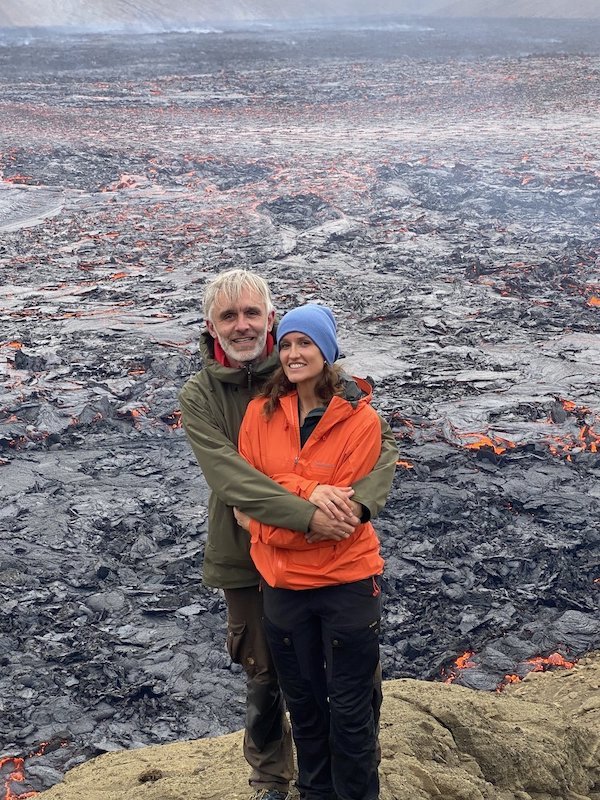

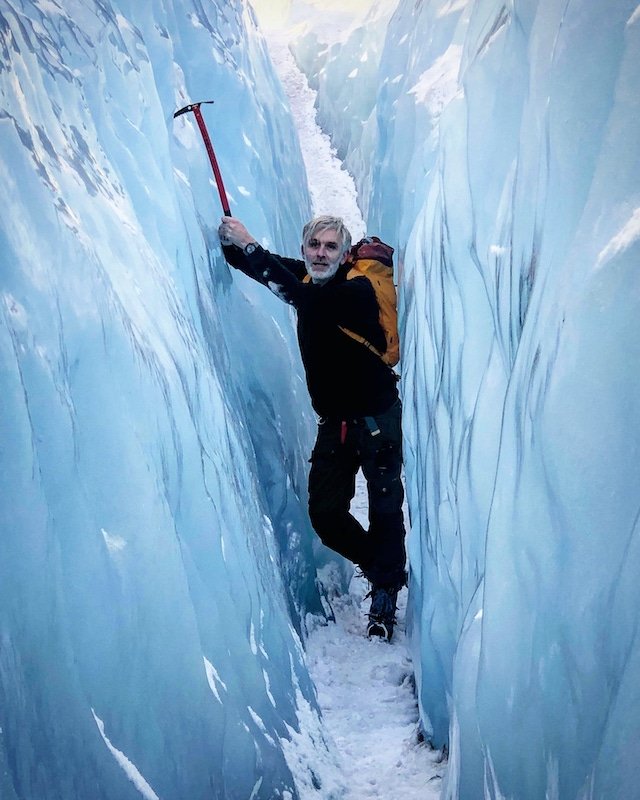


Connect with an Iceland expert!





